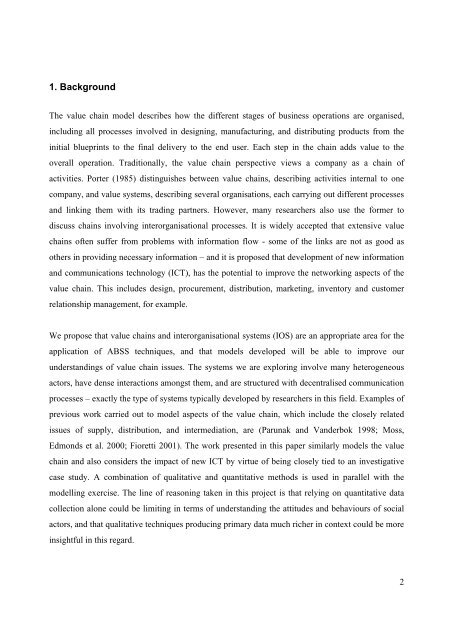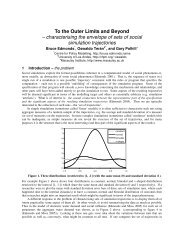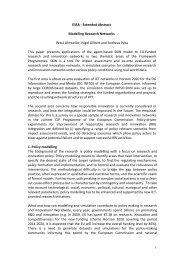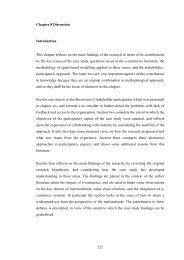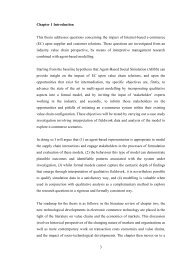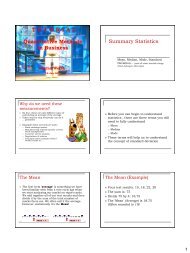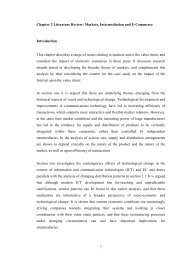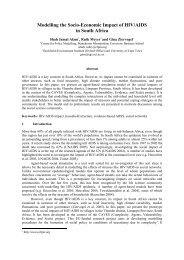1 Agent-Based Modelling Incorporating Qualitative and Quantitative ...
1 Agent-Based Modelling Incorporating Qualitative and Quantitative ...
1 Agent-Based Modelling Incorporating Qualitative and Quantitative ...
You also want an ePaper? Increase the reach of your titles
YUMPU automatically turns print PDFs into web optimized ePapers that Google loves.
1. Background<br />
The value chain model describes how the different stages of business operations are organised,<br />
including all processes involved in designing, manufacturing, <strong>and</strong> distributing products from the<br />
initial blueprints to the final delivery to the end user. Each step in the chain adds value to the<br />
overall operation. Traditionally, the value chain perspective views a company as a chain of<br />
activities. Porter (1985) distinguishes between value chains, describing activities internal to one<br />
company, <strong>and</strong> value systems, describing several organisations, each carrying out different processes<br />
<strong>and</strong> linking them with its trading partners. However, many researchers also use the former to<br />
discuss chains involving interorganisational processes. It is widely accepted that extensive value<br />
chains often suffer from problems with information flow - some of the links are not as good as<br />
others in providing necessary information – <strong>and</strong> it is proposed that development of new information<br />
<strong>and</strong> communications technology (ICT), has the potential to improve the networking aspects of the<br />
value chain. This includes design, procurement, distribution, marketing, inventory <strong>and</strong> customer<br />
relationship management, for example.<br />
We propose that value chains <strong>and</strong> interorganisational systems (IOS) are an appropriate area for the<br />
application of ABSS techniques, <strong>and</strong> that models developed will be able to improve our<br />
underst<strong>and</strong>ings of value chain issues. The systems we are exploring involve many heterogeneous<br />
actors, have dense interactions amongst them, <strong>and</strong> are structured with decentralised communication<br />
processes – exactly the type of systems typically developed by researchers in this field. Examples of<br />
previous work carried out to model aspects of the value chain, which include the closely related<br />
issues of supply, distribution, <strong>and</strong> intermediation, are (Parunak <strong>and</strong> V<strong>and</strong>erbok 1998; Moss,<br />
Edmonds et al. 2000; Fioretti 2001). The work presented in this paper similarly models the value<br />
chain <strong>and</strong> also considers the impact of new ICT by virtue of being closely tied to an investigative<br />
case study. A combination of qualitative <strong>and</strong> quantitative methods is used in parallel with the<br />
modelling exercise. The line of reasoning taken in this project is that relying on quantitative data<br />
collection alone could be limiting in terms of underst<strong>and</strong>ing the attitudes <strong>and</strong> behaviours of social<br />
actors, <strong>and</strong> that qualitative techniques producing primary data much richer in context could be more<br />
insightful in this regard.<br />
2


